A safari in Africa is one of the most breathtaking experiences a traveler can have. Imagine a 2-week safari watching the sunrise over the Serengeti, hearing lions roar in the distance, and witnessing herds of elephants crossing dusty plains.
Understanding the prices, schedule, and planning specifics can help you experience the best vacation.
Whether you’re seeking a 2-week Kenya and Tanzania safari or adventuring in the best safari destinations in Africa.
This guide explains everything from how much a 2-week African safari cost to whether Tanzania or Kenya is better and how many days you need in the wild.
Validating the value of your money for any of your 2-week tours in Africa.

The Best 2-week Safari In Africa
A 2-week safari in Africa offers the perfect balance of adventure, relaxation, and wildlife encounters.
giving travelers enough time to explore multiple countries and experience the continent’s most iconic destinations.
The best 2-week safari in Africa often combines Kenya and Tanzania, home to world-famous game reserves, breathtaking landscapes, and unmatched wildlife diversity.
Imagine starting in Kenya’s Masai Mara, where vast savannahs teem with lions, elephants, giraffes, and, during the migration season, millions of wildebeests. You can then cross into Tanzania’s Serengeti National Park and Ngorongoro Crater, where game viewing feels like stepping into a wildlife documentary.
Adding destinations like Amboseli National Park, with its postcard-perfect views of Mount Kilimanjaro, and Lake Manyara, known for tree-climbing lions, makes the journey even richer.
One of the highlights of a 2-week Kenya and Tanzania safari is the diversity of experiences.
From thrilling morning game drives and guided bush walks to cultural visits with the Maasai, every day brings new stories and unforgettable encounters.
Accommodation ranges from luxury tented camps overlooking the plains to eco-lodges nestled in the wilderness, catering to both comfort and sustainability.
When planning, many travelers ask, How much does a 2-week African safari cost? The answer depends on your choice of destinations, accommodation style, and travel season.
On average, a luxury 2-week safari in Kenya and Tanzania can cost between $7,000 and $15,000 per person, while mid-range packages are more budget-friendly.
For wildlife lovers, photographers, and cultural explorers, the best safari in Africa is one that’s thoughtfully planned to maximize sightings, minimize travel fatigue, and immerse you in Africa’s raw beauty.
Whether you’re chasing the Great Migration or simply seeking an authentic wilderness escape, a 2-week African safari remains the ultimate travel experience.
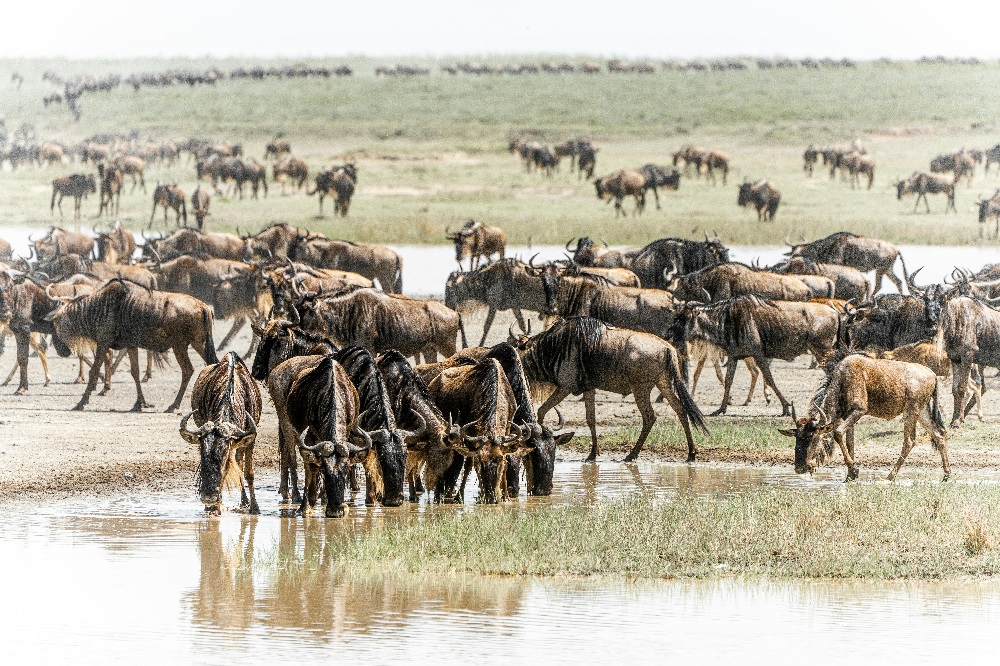
How Much Does A 2-week African Safari Cost?
The cost of a 2-week safari in Africa varies greatly depending on destination, season, level of luxury, and travel style.
Here’s an average breakdown:
| Safari Type | Average Cost per Person (USD) | Inclusions |
| Budget Safari | $2,500 – $4,500 | Mid-range lodges or tents, game drives, park fees, transfers |
| Mid-range Safari | $4,500 – $7,500 | Comfortable lodges, internal flights, all meals, guided tours |
| Luxury Safari | $8,000 – $15,000+ | Exclusive camps, private guides, gourmet dining, charter flights |
High-end luxury safaris often cost more because of exclusive locations, private guides, and top-notch amenities.
If you’re planning the best safari in Africa, these are the most common questions travelers ask before booking a 2-week Kenya and Tanzania safari package.
1. Why Are Some Safaris More Expensive?
Destinations like Tanzania and Botswana tend to be pricier because they focus on low-volume, high-quality tourism.
This means fewer visitors, pristine wildlife areas, and premium lodges. Remote parks require charter flights, which add to costs.
High park fees and luxury accommodation standards also contribute.
2. Best month & cheapest time of the year for a 2-Week African Safari
Your travel month will significantly shape your safari experience:
| Season | Months | Highlights |
| High Season | June–October | Dry season, excellent wildlife viewing, Great Migration river crossings |
| Shoulder Season | January–March | Calving season, birdwatching, fewer crowds |
| Low Season | April–May | Lush landscapes, budget-friendly, but some lodges close due to rains |
For the best 2-week safari in Africa, many travelers aim for July to September to witness the Great Migration in Kenya and Tanzania. If cost is a priority, the green season (April to early June and November) offers reduced rates on lodges and flights. Although it’s the rainy season, wildlife is still abundant, and parks are quieter.
3. How to pack & book for a 2-week African safari
When preparing for the best 2-week African safari, the key to an unforgettable trip lies in smart packing and strategic booking.
Start by confirming your travel dates early, most safari lodges and camps in popular destinations like Kenya, Tanzania, and Botswana fill up months in advance, especially during peak seasons such as the Great Migration in the Masai Mara and Serengeti.
Ideally, you should book your 2-week African safari package at least 6 to 12 months ahead to secure the best accommodations, guides, and rates.
For packing, aim for light, functional, and safari-appropriate clothing.
Neutral tones like khaki, beige, olive, and light brown blend well with the environment and won’t attract insects.
Include lightweight, breathable shirts, convertible pants, and a warm fleece or jacket for chilly mornings and evenings.
Comfortable walking shoes, a wide-brimmed hat, polarized sunglasses, and high-SPF sunscreen are must-haves.
Don’t forget your camera with extra batteries and memory cards to capture the incredible wildlife moments.
Most airlines to safari destinations have strict baggage allowances,
especially for internal flights in East and Southern Africa, often limiting soft-sided luggage to 15–20 kg.
Soft duffel bags are recommended for easier transport in safari vehicles.
A small daypack is also useful for carrying water, snacks, and personal items during game drives.
When booking, compare different 2-week safari tours to see what’s included. Some packages cover all meals, park fees, and transfers, while others may have add-on costs.
Reading reviews, checking itineraries, and working with a reputable tour operator can ensure your trip is both seamless and memorable.
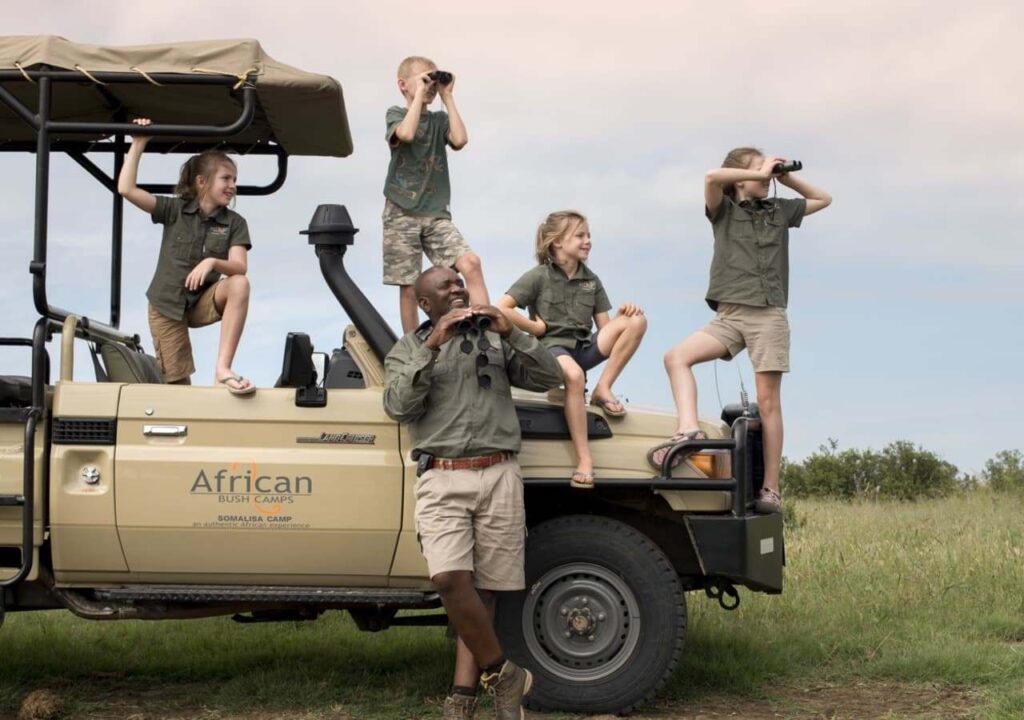
4. Cost of Tanzania safari & Namibia
When planning the best 2-week safari in Africa, many travelers compare the Tanzania safari cost and the Namibia safari cost to choose the most budget-friendly yet unforgettable experience. Prices depend on the season, type of accommodation, activities, and whether you’re booking a private or group tour.
- Tanzania Safari Cost
Tanzania is famous for premium wildlife experiences such as the Great Migration in Serengeti and Ngorongoro Crater tours. On average:
- Budget safaris (camping or basic lodges) cost around $250–$350 per person per day.
- Mid-range safaris (comfortable lodges or tented camps) cost about $400–$600 per person per day.
- Luxury Tanzania safari packages (exclusive lodges, private vehicles, and gourmet dining) can range from $800 to $1,500+ per person per day.
For a 2-week Tanzania safari, travelers typically spend between $7,000 and $15,000 per person depending on comfort level.
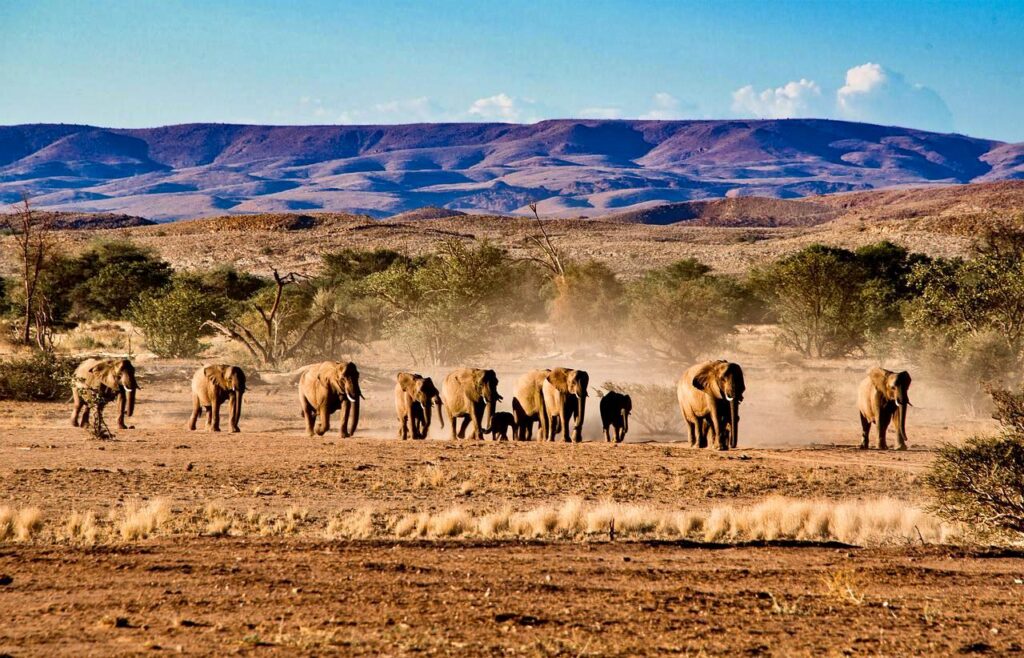
- Namibia Safari Cost
Namibia is known for vast deserts, dramatic landscapes like Sossusvlei, and wildlife safaris in Etosha National Park. It is generally more affordable than Tanzania.
- Budget safaris can cost as low as $200–$300 per person per day.
- Mid-range safaris are around $350–$550 per person per day.
- Luxury safaris with private guides, scenic flights, and top lodges range from $700–$1,200+ per person per day.
A 2-week Namibia safari typically costs between $5,500 and $12,000 per person.
Tanzania vs Namibia Safari Cost Comparison
| Safari Type | Tanzania (Per Person/Day) | Namibia (Per Person/Day) |
| Budget | $250 – $350 | $200 – $300 |
| Mid-range | $400 – $600 | $350 – $550 |
| Luxury | $800 – $1,500+ | $700 – $1,200 |
| 2-week average total | $7,000 – $15,000 | $5,500 – $12,000 |
Tanzania tends to be more expensive due to high park fees and seasonal demand during the Great Migration. Namibia offers more affordable rates, especially for self-drive safaris, but both destinations deliver world-class safari adventures.
How Much Does A 2-week African Safari Cost In The UK
From the UK, a 2-week African safari can range between £3,500 and £8,000 depending on the country, season, and level of luxury. This usually includes flights, accommodation, park fees, and most meals.
Here is the best breakdown you need;
1. Which Country Has the Cheapest Safari?
If you’re looking for the most budget-friendly safari destination, Namibia and Tanzania are surprisingly affordable for what they offer, but Uganda and Kenya often come out on top for budget-conscious travelers. In Kenya, you can enjoy incredible wildlife viewing for as low as $150–$250 per day if you choose budget lodges or join a group tour. Namibia offers lower park entry fees and plenty of self-drive options, which can significantly cut costs.
- Average Daily Safari Costs by Country
| Country | Budget Safari (USD/day) | Mid-Range (USD/day) | Luxury (USD/day) |
| Kenya | 150 – 250 | 300 – 500 | 600 |
| Tanzania | 200 – 300 | 400 – 600 | 800 |
| Namibia | 100 – 200 | 250 – 400 | 600 |
| Uganda | 150 – 250 | 300 – 500 | 700 |
2. Are African Safaris Worth the Money?
Absolutely. A safari is more than just a holiday; it’s a once-in-a-lifetime experience where you witness the Big Five, unique landscapes, and cultural traditions up close.
Whether it’s the Great Migration in Kenya, the salt pans of Namibia, or gorilla trekking in Uganda, the memories are priceless. A safari blends adventure, photography, and conservation, so your money also supports wildlife protection and local communities.
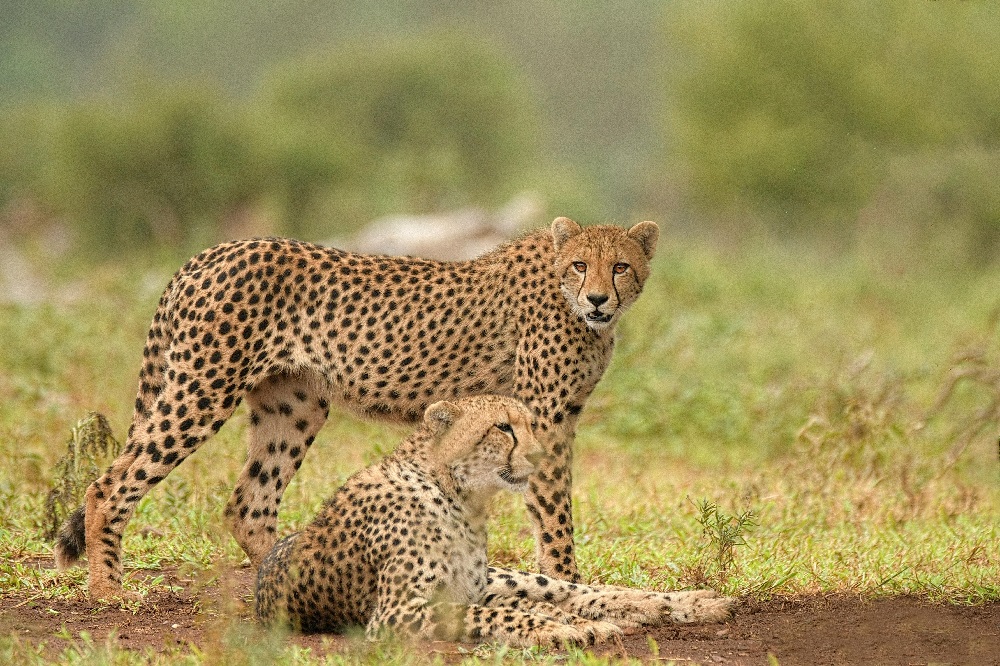
3. Who Is Best to Book a Safari With?
For peace of mind, book with reputable, registered safari operators. Top choices include:
International agencies for package deals from your home country
Local tour operators (more affordable and customizable)
Specialized safari companies like &Beyond, Wilderness Safaris, or Asilia Africa
4. How Much Spending Money for a Kenya Safari from the UK?
Your spending money depends on whether meals, park fees, and activities are included in your safari package. For a 2-week Kenya safari, budget an additional £400–£700 for souvenirs, tips, extra excursions (like hot-air balloon rides), and personal expenses.
Estimated Extra Costs
| Expense Type | Average Cost |
| Tips for Guides | £10–£15/day |
| Souvenirs | £50–£200 |
| Extra Activities | £100–£300 |
| Drinks & Snacks | £50–£100 |
5. Which African Safari Is Best for Money?
If you’re after value for money, Kenya and Namibia are top picks. Kenya offers rich wildlife in compact areas like Masai Mara and Amboseli, meaning less travel time and more game drives. Namibia’s Etosha National Park offers self-drive safaris, which cut guide costs while still delivering excellent wildlife sightings.
6. How Far in Advance Should I Book an African Safari?
For peak season safaris (June–October), book at least 8–12 months in advance to secure the best lodges and guides. Off-peak trips can be booked 4–6 months ahead, but last-minute offers are rare for popular parks.
7. How to Pack for a 2-Week Safari?
When packing for a 2-week African safari, focus on lightweight, neutral-colored clothing, sturdy footwear, and essentials like insect repellent and sunscreen. Luggage limits on small safari planes are often 15–20 kg, so pack light.
Safari Packing Essentials
| Item | Why It’s Important |
| Neutral Clothing | Blends with environment |
| Binoculars | Spot distant wildlife |
| Camera with Zoom Lens | Capture detailed shots |
| Reusable Water Bottle | Stay hydrated |
| Lightweight Jacket | Morning & evening chill |
8. Which Safari Is Best in Africa?
The Masai Mara (Kenya) and Serengeti (Tanzania) are unmatched for the Great Migration, while Okavango Delta (Botswana) offers unique water-based safaris. Namibia’s Etosha is ideal for a quieter, scenic experience, and South Africa’s Kruger National Park is great for first-timers with its excellent infrastructure.
9. What Is the Average Cost of a 2-Week Safari?
On average, a 2-week safari costs:
| Safari Type | Price Range (USD) |
| Budget | 2,500 – 4,000 |
| Mid-Range | 5,000 – 8,000 |
| Luxury | 9,000 – 15,000 |
10. Where to Spend 2 Weeks in Africa?
For a balanced trip, combine Kenya’s Masai Mara with Tanzania’s Serengeti for the migration, or pair Namibia’s deserts with Botswana’s Delta for contrasting landscapes. A mix of wildlife, culture, and relaxation is ideal, ending your safari with a beach stay in Zanzibar or Diani Beach, Kenya.
11. How Much Should I Budget for an African Safari?
Including flights, park fees, accommodation, and activities, budget:
- Budget Safari: $2,500–$4,000
- Mid-Range: $5,000–$8,000
- Luxury: $9,000–$15,000
12. Where Is Best for a Safari Holiday?
For the ultimate safari holiday, Kenya and Tanzania lead with their wildlife density and iconic parks. Namibia offers unique landscapes, Botswana brings water safaris, and South Africa is perfect for first-timers seeking comfort with adventure.
Kenya, Tanzania, Uganda, Rwanda & Botswana safari
Kenya and Tanzania are both top contenders for the best safari in Africa, each offering iconic landscapes, abundant wildlife, and unique safari experiences. If you’re planning a 2 week safari or even a 2 week Kenya and Tanzania safari, the choice between the two often depends on your travel style, budget, and timing.
Kenya is famous for the Masai Mara National Reserve, incredible game drives, and the Great Migration between July and October. It offers well-developed infrastructure, making it easier for first-time safari travelers.
Tanzania is home to the Serengeti National Park and Ngorongoro Crater, with vast, uncrowded plains and some of the most dramatic wildlife spectacles on earth.
If you’re wondering how much does a 2 week African safari cost, expect to budget anywhere from $5,000 to $12,000 per person, depending on whether you choose mid-range lodges, luxury tented camps, or private guided tours.
1. Best Time to Visit Tanzania for Safari
The best time for a Tanzania safari is June to October during the dry season, when wildlife viewing is at its peak, and animals gather around water sources.
- January to February is perfect for witnessing the calving season in the southern Serengeti.
- June to July is ideal for seeing the Great Migration in the western corridor.
- August to October is perfect for river crossings in northern Serengeti.
Safari Comparison: Botswana, Rwanda, Uganda, Tanzania, and Kenya
| Country | Popular Safari Parks | Highlights | Ideal For | Cost Range (Per Person for 2 Weeks) |
| Kenya | Masai Mara, Amboseli, Tsavo, Samburu | Big Five, Great Migration, diverse cultures | First-time travelers, photographers | $5,000 – $10,000 |
| Tanzania | Serengeti, Ngorongoro, Tarangire, Selous | Great Migration, vast landscapes, luxury lodges | Serious wildlife enthusiasts | $6,000 – $12,000 |
| Botswana | Okavango Delta, Chobe, Moremi | Water safaris, high-end lodges, remote experiences | Luxury & exclusivity seekers | $8,000 – $15,000 |
| Rwanda | Volcanoes National Park | Mountain gorilla trekking | Primates & adventure travelers | $7,000 – $12,000 |
| Uganda | Bwindi, Murchison Falls, Queen Elizabeth | Gorillas, chimps, varied landscapes | Wildlife + primate mix | $6,000 – $10,000 |
Safari Experiences in Kruger, Serengeti, and Masai Mara
| Destination | Safari Experience | Best Time to Visit | Unique Features |
| Kruger National Park (South Africa) | Self-drive & guided safaris | May–September | Affordable, well-developed roads, huge diversity of species |
| Serengeti National Park (Tanzania) | Classic game drives, hot air balloon safaris | June–October | Great Migration, vast open plains, predator action |
| Masai Mara National Reserve (Kenya) | Game drives, cultural visits | July–October | Wildebeest migration, Big Five, rich Maasai culture |
2.Safaris in Each Country & How They Are Ideal
Kenya – Best for variety, culture, and shorter trips. Ideal for travelers seeking to combine wildlife experiences with cultural encounters and breathtaking landscapes.
Tanzania – Best for immersive, long safaris. Perfect for those who want to experience the vast wilderness and migration routes in full.
Botswana – Best for luxury and water-based safaris. Ideal if you prefer exclusivity and fewer crowds.
Rwanda – Best for gorilla trekking. Perfect for adventure lovers who want short, intense wildlife experiences.
Uganda – Best for primates and diverse ecosystems. Great for combining gorilla trekking with classic savanna safaris.
South Africa (Kruger) – Best for affordability and self-drive safaris. Perfect for first-time travelers on a budget.
Here are some of the Popular Safaris;
Masai Mara Safari (Kenya) – Known for the Great Migration and incredible Big Five sightings.
Serengeti Safari (Tanzania) – Famous for vast savannahs and predator-prey interactions.
Ngorongoro Crater Safari (Tanzania) – Wildlife-rich volcanic caldera, ideal for day safaris.
Okavango Delta Safari (Botswana) – Water-based mokoro safaris and birdwatching paradise.
Chobe National Park Safari (Botswana) – Massive elephant herds and river cruises.
Gorilla Trekking in Volcanoes NP (Rwanda) – Intimate encounters with endangered mountain gorillas.
Bwindi Impenetrable Safari (Uganda) – Gorilla trekking with stunning rainforest views.
Kruger National Park Safari (South Africa) – Affordable and accessible Big Five encounters.
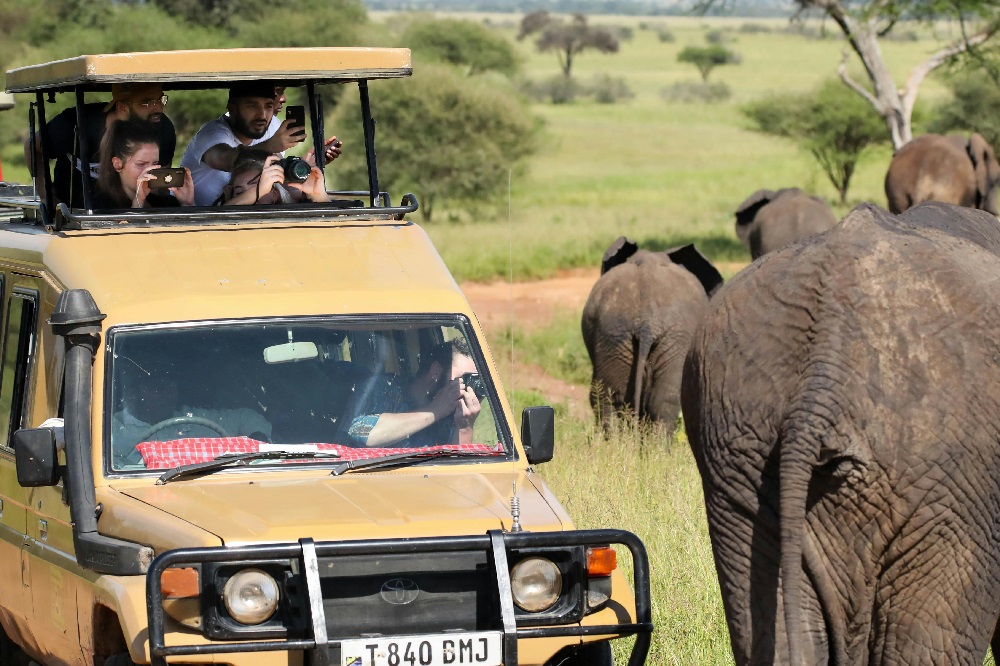
2 Week Safari To South Africa: Best Time & Best Budget Options
South Africa is one of the top destinations in Africa for travelers seeking a blend of wildlife, culture, and comfort. A 2-week safari here can blend days in Kruger National Park with urban adventures in Cape Town, wine-tasting in Stellenbosch, and scenic drives along the Garden Route.
It’s a flexible destination that caters equally to budget-conscious explorers and luxury travelers, and for many, it offers some of the best safaris in Africa without the higher costs of East Africa.
1. Best Time for a 2 Week Safari to South Africa
South Africa’s diverse climate means there’s always somewhere great to visit, but for game viewing in Kruger and other reserves, the dry winter months (May to September) are ideal.
During this period, vegetation is sparse, animals gather at waterholes, and you have a higher chance of spotting the Big Five.
- May–June: Cooler weather, fewer tourists, good prices.
- July–August: Peak wildlife viewing, ideal for photography.
- September: Still excellent wildlife conditions, but warmer temperatures and spring flowers make it especially scenic.
If your itinerary includes Cape Town or the Garden Route, October–April offers warmer, sunnier weather perfect for combining your safari with coastal exploration.
2. Best Budget for a 2 Week Safari to South Africa
Many travelers are pleasantly surprised when researching how much does a 2 week African safari cost in South Africa it’s often more affordable than in Kenya or Tanzania, especially if you self-drive or mix in national park rest camps.
Budget-friendly option:
- Accommodation: National park rest camps or budget lodges ($100–$200/night).
- Transport: Self-drive rental car in Kruger.
- Estimated cost: $3,000–$4,500 per person (including flights from Europe).
Mid-range option:
- Accommodation: Comfortable lodges or boutique hotels ($200–$400/night).
- Transport: Combination of self-drive and guided game drives.
- Estimated cost: $5,000–$7,000 per person.
Luxury option:
- Accommodation: Exclusive private reserves like Sabi Sands or Madikwe ($700–$1,200+/night).
- Transport: Charter flights between destinations, private guides.
- Estimated cost: $9,000–$15,000+ per person.
3. Sample Itinerary for a South Africa 2 Week Safari:
- Days 1–4: Kruger National Park (self-drive or guided).
- Days 5–7: Private reserve in Sabi Sands for close-up leopard encounters.
- Days 8–11: Cape Town Table Mountain, Robben Island, and wine country.
- Days 12–14: Garden Route Scenic drives, beaches, and coastal reserves.
South Africa’s combination of value, variety, and world-class wildlife makes it a perfect choice for first-timers or repeat visitors looking for a 2-week safari that balances adventure with affordability.
How Many Days Should You Spend On A Safari?
Deciding how many days to spend on safari depends on goals (photography vs checklist viewing), travel tolerance, and how many parks you want to visit. Below are practical guidelines to structure your time for the best return on investment.
Minimum Effective Safari 3–4 days: This is the shortest realistic window for a safari. It allows for 2 full days of game drives (morning and late afternoon) and is best if you’re pressed for time or combining a short safari with another holiday. However, the short stay limits your ability to explore multiple habitats and reduces your odds of seeing rarer species.
Balanced Safari 5–7 days: The most common recommendation. With 5–7 days, you can comfortably visit one major park with enough time for relaxed game drives, an optional night drive, and some lodge downtime. It’s ideal for first-timers who want a high likelihood of Big Five sightings without burnout.
Immersive Safari 10–14 days: This is where transformative experiences happen. A two-week safari gives you the time to: Visit multiple parks or countries, Maasai Mara, Serengeti, and Ngorongoro.
Recover from travel days and reduce the fatigue that comes with daily game drives.
Add variety: walking safaris, cultural village visits, balloon rides, and beach days.
Increase photographic opportunities by following seasonal animal movements.
Daily Structure Recommendations nclude
- Game drives: Plan for two drives per day, early morning (dawn to mid-morning) and late afternoon to sunset. Animals are most active at these times.
- Midday: Use for rest, lodge activities, or soft excursions (birding, cultural visits).
- Night drives: Offered in some reserves, great for spotting nocturnal species.
Rest & Buffer Days: Always include at least 1–2 buffer days in a two-week plan for flight delays, travel between parks, and recovery. International travel plus internal transfers can be tiring, and buffer days prevent rushed itineraries.
Personal Tolerance & Group Style like Private travelers can handle longer days and more drives; families or older travelers should pace with more downtime. If you’re keen on photography, allow extra time at high-value locations to adjust for lighting, tracking, and patience.
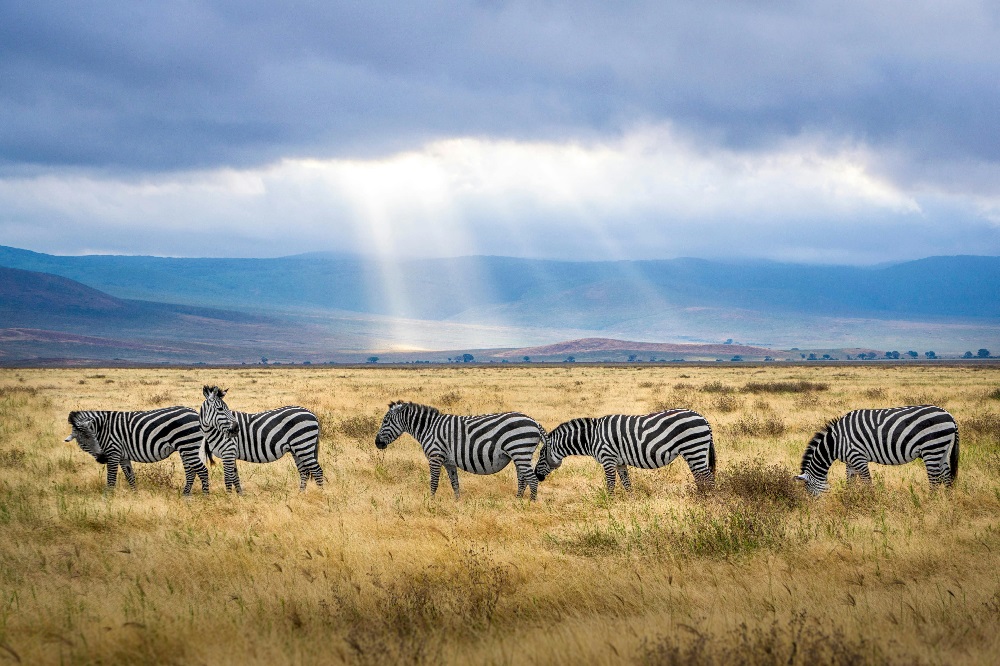
Best Beaches In Kenya And Tanzania – Perfect for Ending Your 2 Week Safari
One of the best things about planning a 2-week Kenya and Tanzania safari is that you can end it on the warm shores of the Indian Ocean.
Both countries boast some of the best destinations in Africa for post-safari relaxation, offering pristine beaches, turquoise waters, and luxury resorts.
After days of game drives in the best safari in Africa, there’s nothing better than swapping binoculars for a beach towel.
Best Beaches in Kenya
1. Diani Beach
Consistently ranked among Africa’s most beautiful beaches, Diani offers soft white sand, swaying palms, and excellent snorkeling and diving. Its luxury resorts and vibrant nightlife make it perfect for couples and honeymooners finishing a 2-week safari.
2. Watamu
Known for its coral gardens and protected marine park, Watamu is a paradise for divers and snorkelers. It’s quieter than Diani, making it ideal for travelers seeking peace after a busy 2-week Kenya and Tanzania safari.
3. Lamu Island
A UNESCO World Heritage Site, Lamu offers a mix of Swahili culture, historic stone buildings, and laid-back beach vibes. Accessible by boat, it’s a unique destination for those who want cultural immersion with their beach time.
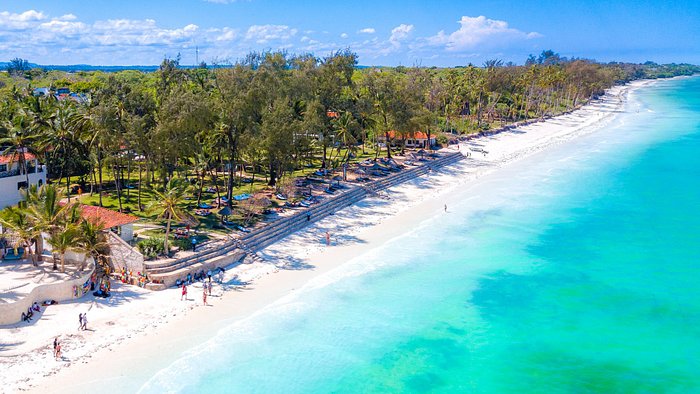
Best Beaches in Tanzania
1. Zanzibar – Nungwi Beach
Nungwi is a lively beach town with beautiful sunsets, calm swimming waters, and plenty of seafood restaurants. It’s one of the easiest add-ons to a 2-week Kenya and Tanzania safari, with regular flights from mainland parks.
2. Kendwa Beach
Close to Nungwi but quieter, Kendwa offers wide stretches of sand that aren’t affected much by tides, perfect for all-day swimming.
3. Paje Beach
Famous for kite surfing, Paje combines a chilled-out atmosphere with water sports. Great for active travelers who want more than just sunbathing after experiencing the best safari in Africa.
4. Mafia Island
For true seclusion, Mafia Island’s reefs and whale shark encounters are unmatched. It’s more remote and less commercialized, making it perfect for a peaceful end to your journey.
If you’re budgeting and wondering how much does a 2 week African safari cost with a beach extension, adding 3–4 days in Zanzibar or Diani usually increases the total by $500–$2,000 depending on your accommodation choice.
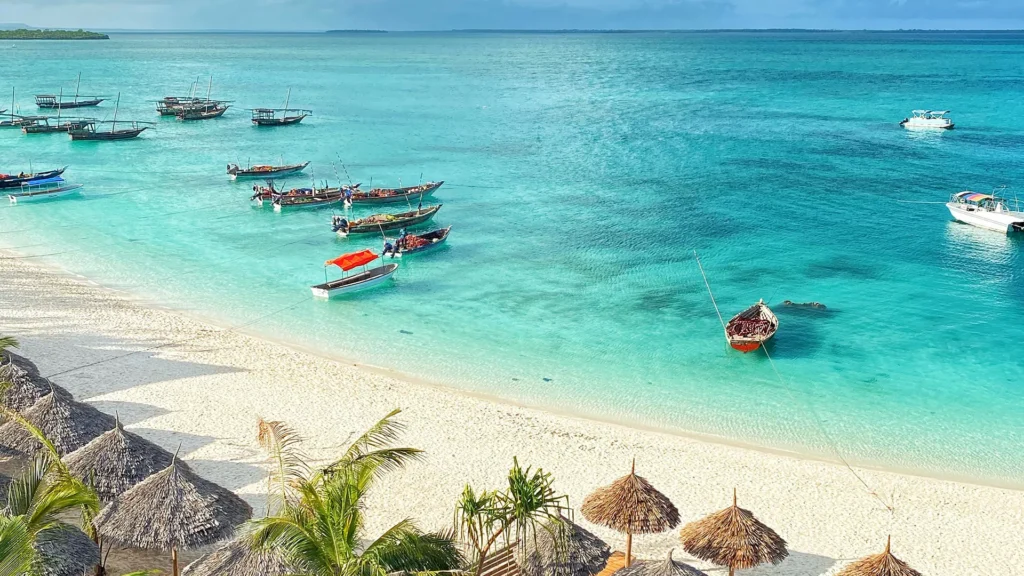
Best Five-Star Hotels in Kenya, Tanzania, Botswana, Rwanda & South Africa for a 2 Week African Safari
For travelers seeking the best safari in Africa, the choice of lodge or hotel can be as important as the wildlife itself. A 2-week safari, whether in Kenya, Tanzania, Botswana, Rwanda, or South Africa becomes unforgettable when paired with world-class luxury, private guides, and breathtaking views.
-
Kenya – Top Luxury Safari Lodges
1. Mahali Mzuri, Maasai Mara
Owned by Sir Richard Branson, this tented camp offers panoramic views of the Mara plains, perfect for the Great Migration during a 2 week Kenya and Tanzania safari.
2. Angama Mara, Maasai Mara
Perched on the Oloololo Escarpment, this lodge offers sweeping views and is famed for its exceptional service and romantic atmosphere.
3. Elewana Loisaba Tented Camp, Laikipia
Combines luxury with conservation, offering camel safaris, horseback riding, and star-bed experiences.
-
Tanzania – Elite Safari Stays
1. &Beyond Ngorongoro Crater Lodge
Often called the “game lodge at the top of the world,” it delivers unmatched crater views and opulent interiors.
2. Four Seasons Safari Lodge, Serengeti
Perfect for a mid-safari break on a 2-week African safari, with infinity pools overlooking watering holes.
3. Singita Sasakwa Lodge, Grumeti
An exclusive lodge blending Edwardian elegance with unparalleled wildlife access in a private reserve.
-
Botswana – Luxury in the Delta
1. Mombo Camp, Okavango Delta
Known as “the Place of Plenty,” it’s one of the most exclusive camps for big game sightings.
2. Vumbura Plains Camp, Okavango Delta
Offers a mix of land and water-based safari activities in a modern, airy setting.
3. Zarafa Camp, Selinda Reserve
With only four suites, it delivers intimacy, luxury, and conservation-focused travel.
-
Rwanda – Gorilla Trekking Luxury
1. Bisate Lodge, Volcanoes National Park
Eco-chic villas with views of Bisoke volcano, perfect after gorilla trekking.
2. One&Only Gorilla’s Nest
Surrounded by eucalyptus forest, it’s ideal for a blend of luxury and wildlife adventure.
3. Singita Kwitonda Lodge
Provides direct access to gorilla trekking trails and the highest level of personalized service.
-
South Africa – Big Five & Coastal Luxury
1. Royal Malewane, Kruger National Park
Renowned for its expert guiding team and lavish suites.
2. Londolozi Private Granite Suites, Sabi Sands
Combines contemporary design with unmatched leopard sightings.
3. Ellerman House, Cape Town
Perfect for ending a 2-week safari with ocean views, fine dining, and access to the city’s attractions.
If you’re calculating how much does a 2 week African safari cost in full luxury, expect $15,000–$25,000+ per person, depending on the country and season. Many of these lodges include all meals, drinks, game drives, and even charter flights.
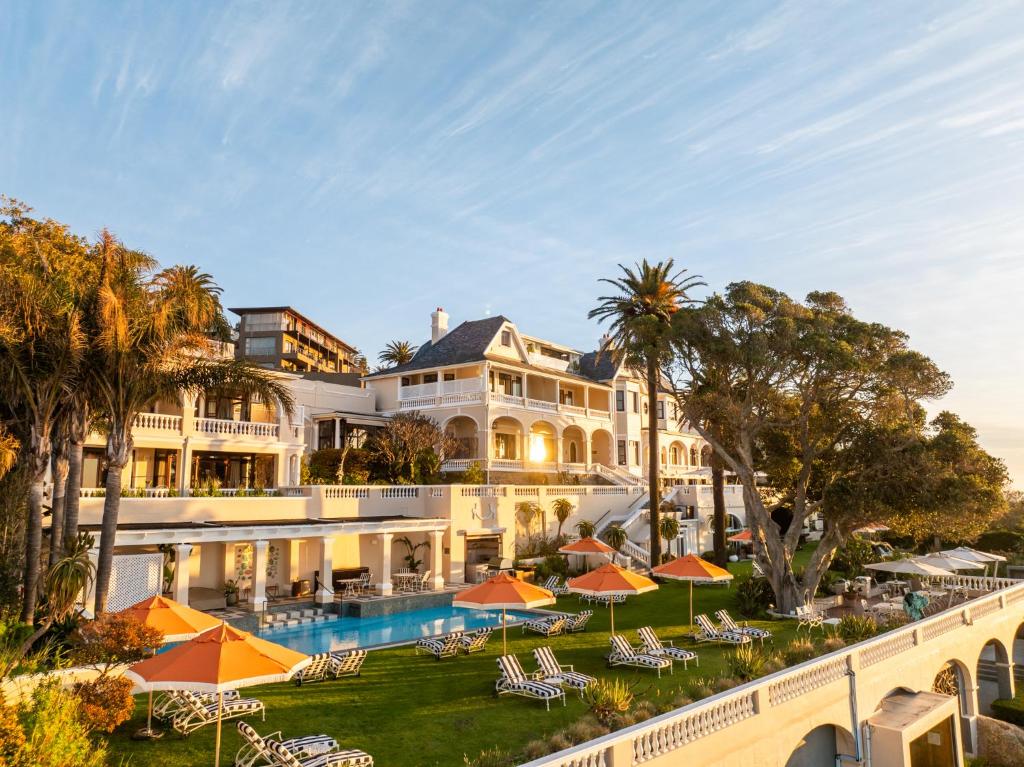
Cultural Safari Experiences for a 2-week African safari
A 2-week safari offers much more than wildlife. Africa’s cultural richness is just as remarkable as its landscapes. From ancient traditions to vibrant modern communities, adding cultural elements to your trip transforms it from a simple holiday into a life-changing experience.
Why Add Cultural Activities?
- Deeper Understanding – See the connections between people, wildlife, and the land.
- Economic Impact – Cultural tours often directly benefit local communities.
- Personal Enrichment – You return with stories that go beyond animals and landscapes.
Top Cultural Experiences by Country
- Kenya & Tanzania – Maasai Villages
No 2 week Kenya and Tanzania safari is complete without learning about the Maasai. Visits often include meeting elders, watching traditional dances, and exploring homesteads. Many villages sell handcrafted beadwork, which helps fund education and healthcare. - Zanzibar & Lamu – Swahili Coast Heritage
If your safari ends at the coast, explore centuries-old trading ports. In Zanzibar, visit spice farms to learn about cloves, nutmeg, and cinnamon. In Lamu, walk narrow alleys lined with carved wooden doors and enjoy dhow sailing trips. - Botswana – San Bushmen Experiences
In the Kalahari, walk with San guides who share ancestral knowledge about survival from finding water in arid landscapes to identifying medicinal plants. - South Africa – Cape Winelands & Townships
A 2 week safari ending in South Africa offers the chance to blend game drives with wine tastings in Stellenbosch or Franschhoek. Township tours, when done responsibly, provide insight into South Africa’s history and vibrant present. - Rwanda – Intore Dance & Storytelling
After gorilla trekking, experience Intore dancing a traditional performance with music, drumming, and symbolic movements passed down through generations.
Tips for a Respectful Cultural Safari
- Ask Before Photographing People – Respect privacy and traditions.
- Dress Modestly in Rural Areas – Even in hot climates, covering shoulders and knees is often appreciated.
- Engage, Don’t Spectate – Join in activities rather than simply watching.
- Buy Directly From Artisans – Ensures fair pay and authenticity.
- Be Open to Learning – Ask questions, listen actively, and immerse yourself.
Blending Wildlife and Culture in a 2 Week Safari
The perfect 2-week African safari can combine:
- 8–10 days of wildlife viewing in the best destinations in Africa, like the Maasai Mara, Serengeti, Okavango Delta, or Kruger National Park.
- 2–4 days of cultural immersion — village visits, culinary tours, or historical sites.
- Optional coastal relaxation at Kenya’s Diani Beach or Tanzania’s Zanzibar to end on a peaceful note.
Pro Tip: Cultural tours can be budget-friendly add-ons. When planning and asking how much does a 2 week African safari cost, remember that community visits often cost a fraction of a game drive but leave an equally lasting impression.
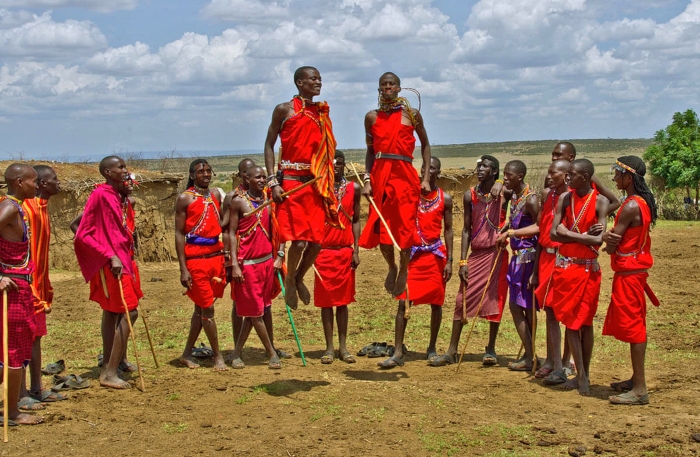
conclusion
A 2 week African safari is more than just a holiday, it’s a journey into the heart of some of the best destinations in Africa, where breathtaking landscapes, incredible wildlife, and rich cultural traditions come together in an unforgettable experience.
Whether you’re embarking on a 2-week Kenya and Tanzania safari to witness the Great Migration, exploring Botswana’s pristine Okavango Delta, trekking with gorillas in Rwanda, or ending your adventure with South Africa’s Big Five, the possibilities are endless.
From luxury five-star lodges to budget-friendly tented camps, there’s an option for every traveler.
If you’ve ever wondered how much a 2-week African safari costs, the answer depends on your style, but with smart planning, you can balance comfort, adventure, and affordability.
Adding cultural experiences, such as Maasai village visits or Zanzibar spice tours, deepens the journey, while a few days on the best beaches in Kenya and Tanzania provide the perfect post-safari relaxation.
Choosing sustainable travel options ensures that the wildlife and communities you visit will thrive for generations to come.
By supporting local guides, staying at eco-friendly lodges, and respecting cultural traditions, you turn your safari into a meaningful contribution to Africa’s future.
In the end, a 2-week safari is about more than ticking animals off a list; it’s about connecting with the land, its people, and its rhythms.
Plan well, travel responsibly, and Africa will reward you with memories that last a lifetime.
Your next great story starts here. Book your safari now with Ravina Tours and let the wild welcome you home.
